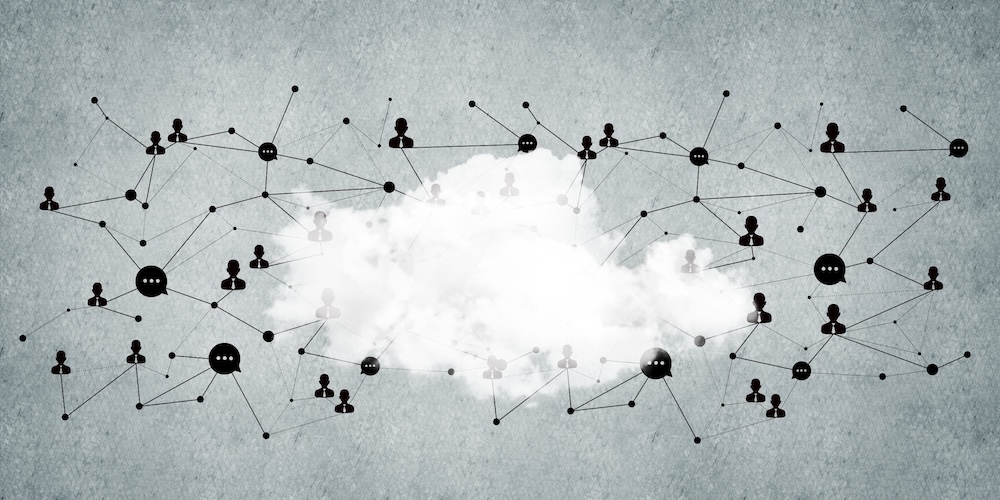Head In The Clouds?
TR2024/D1 is a draft ruling that places Australian software distributors and users of software across borders squarely in the ATO’s crosshairs. It seeks to broaden the definition of a royalty in a way that could dramatically affect the tax treatment of many cross-border software transactions.
But does the ATO have their head in the clouds? Hall Chadwick's international tax specialists explore this below.
Cloud cuckoo land

There are many articles reacting to the issuance of TR 2024/D1. The consensus among these articles is that this ruling is out of step with the approach taken by the United States1, and with the OECD commentary on Article 12 of the Model Convention.
It is evident that the ruling is targeting Australian distributors of cloud computing services, such as SaaS, PaaS, and IaaS. However, although the ruling does not explicitly state it, its reasoning seems to suggest that subscription fees for cloud computing services can also be within its scope. This means that businesses and individuals who directly subscribe to cloud computing services from foreign providers may be considered a royalty and, consequently, subject to withholding tax.
Foundation in copyright law?
The Commissioner has euphemized his theory as the 'rights-based approach,' suggesting that it has a solid foundation in copyright law. Unfortunately, this 'rights-based approach' seems apocryphal when certain conceptual elements of a computer program, as a matter of copyright law, can be appreciated and even visualized. Section 10 of the Copyright Act 1968 states, 'A computer program means a set of statements or instructions to be used directly or indirectly in a computer to bring about a certain result'. If the program is intended to produce the word 'hello', the statements or instructions are as follows:
“01101000, 01100101, 01101100, 01101100, 01101111”
The sequence of binary values above is the object code of a computer program…let’s call it 'mumbo jumbo’ for the present purposes.
Literary works are defined in Section 10, which includes computer programs or compilations of computer programs. Therefore, computer programs are protected as literary works.
Naturally, people associate literary works with stories like 'The Very Hungry Caterpillar,' from which your children may derive considerable enjoyment. Some astute individuals with mammonish intentions may want to make copies of it to sell to parents like you for a profit, ideally without paying Penguin Random House (which acquired its copyright in 2019). Thus, the primary form of infringing the copyright of a literary work is to 'reproduce' it 'in a material form', such as the physical book in this example.
Probably no one enjoys reading the mumbo jumbo, but people derive enjoyment from the functionality outcome produced by the computer through executing the mumbo jumbo.
Here is the fundamental difference with copyright in 'The Very Hungry Caterpillar': the functionality outcome of executing the mumbo jumbo is not protected by copyright law2; the mumbo jumbo is.
And now to the cloud

Let’s reify what such a functionality outcome in a cloud computing setting is: imagine we log on to Zoom and conduct a Zoom meeting in the cloud. At this stage, the fallacy of the ruling is revealing itself - how can we violate the copyright in the 'mumbo jumbo' owned by Zoom Video Communications, Inc (“Zoom Inc”) by conducting a Zoom meeting? We cannot see the mumbo jumbo, we cannot copy it, and we cannot do anything with it. Thus it is impossible to infringe the copyright through the primary mean, i.e., the reproduction in material form.
The ruling says that conducting a Zoom meeting without a license constitutes an infringement of Zoom Inc's copyright, as it involves the communication of the 'mumbo jumbo' to the public (s31(1)(iv)). Consequently, our subscription to the Zoom service can be considered as royalty, where the service provider is located overseas. In this context, the statutory definition of 'communicate' in section 10 refers to 'making available online or electronically transmitting... a work.' In the present case, the 'work' in question is the 'mumbo jumbo.
It appears (without making a final determination) that Zoom Inc transmits the 'mumbo jumbo' to the public when it installs or routes the Zoom program to servers of a cloud service provider such as AWS and Snowflake, when members of the public (e.g. we) log on to Zoom for a meeting. However, it's challenging to describe this process as 'making the 'mumbo jumbo' available online' because we cannot visually perceive the 'mumbo jumbo.' Nevertheless, for the sake of discussion, let's assume that this is indeed the case.
In contrast, Penguin Random House makes 'The Very Hungry Caterpillar' available online by placing an electronic copy of it on cloud servers, allowing children to access and read the book. However, the reverse is not true: the children neither transmit nor make 'The Very Hungry Caterpillar' available online3.
The described process can be characterized as Zoom Inc exercising its copyright in the 'mumbo jumbo' by communicating it to the public. However, to infringe the copyright under Section 101, we (i.e., the public) would need to replicate the process exactly as Zoom Inc does. Technically, it is impossible for us to do so simply by logging onto Zoom. An alternative method for us to communicate in this context is to stream our meeting to fellow tax enthusiasts. However, in that case, we neither transmit nor make the 'mumbo jumbo' available online.
The authorisation argument in the ruling is simply misconceived, which is calculated to bring the distributors within scope of ruling. Authorisation is the secondary infringement, which can only occur when the primary infringement can take place4. Since we are not able to infringe the copyright in 'mumbo jumbo', a distributor cannot authorise us to do so either.
COULD THIS AFFECT YOU?
Cloud computing is an ever-evolving space, and the international tax landscape is now beginning to evolve with it. As to how it will continue to do so – It is still far too early to tell, but one thing is for certain - the ATO is determined to overcome the s6-5(3) ‘source’ constraint through creative interpretation to expand the definition of ‘royalty’, thereby extending the taxing right to the income generated by the IP of foreign residents.
TR 2024/D1 is currently open for public consultation, closing on 1 March 2024.
This article merely provides our current views on draft ruling TR 2024/D1. We encourage and stress the importance of complying with all legislation and relevant regulations, and consider the ATO’s views in accordance with your risk appetite.
If you distribute or you are a subscriber of software across borders, please do not hesitate to reach out to your trusted Hall Chadwick advisor to find out more.
Footnote
- Notice of Proposed Rulemaking: Classification of Cloud Transactions and Transactions Involving Digital Content, REG-130700-14,
- Ricketson, S and Creswell, C (n.d.). - The law of intellectual property : copyright, designs & confidential information, [9.255] - [9.270] Thomson Reuters, paragraph available at Westlaw Australia (Accessed: 5 January, 2024)
- Roadshow Films Pty Limited v iiNet Limited [2011] FCAFC 23 [329] (Jagot J, with Nicholas J concurring at 23 [661]).
- Roadshow Films Pty Ltd v iiNet Limited [2012] HCA 16, paragraph 94.









